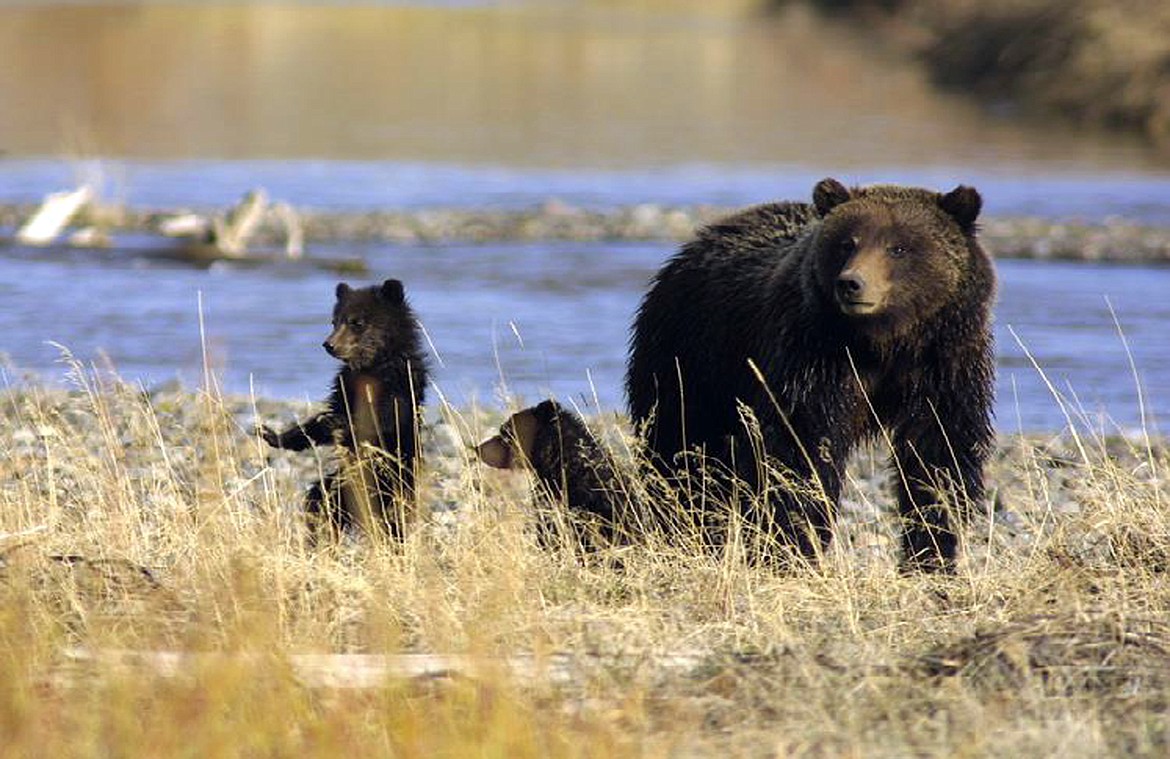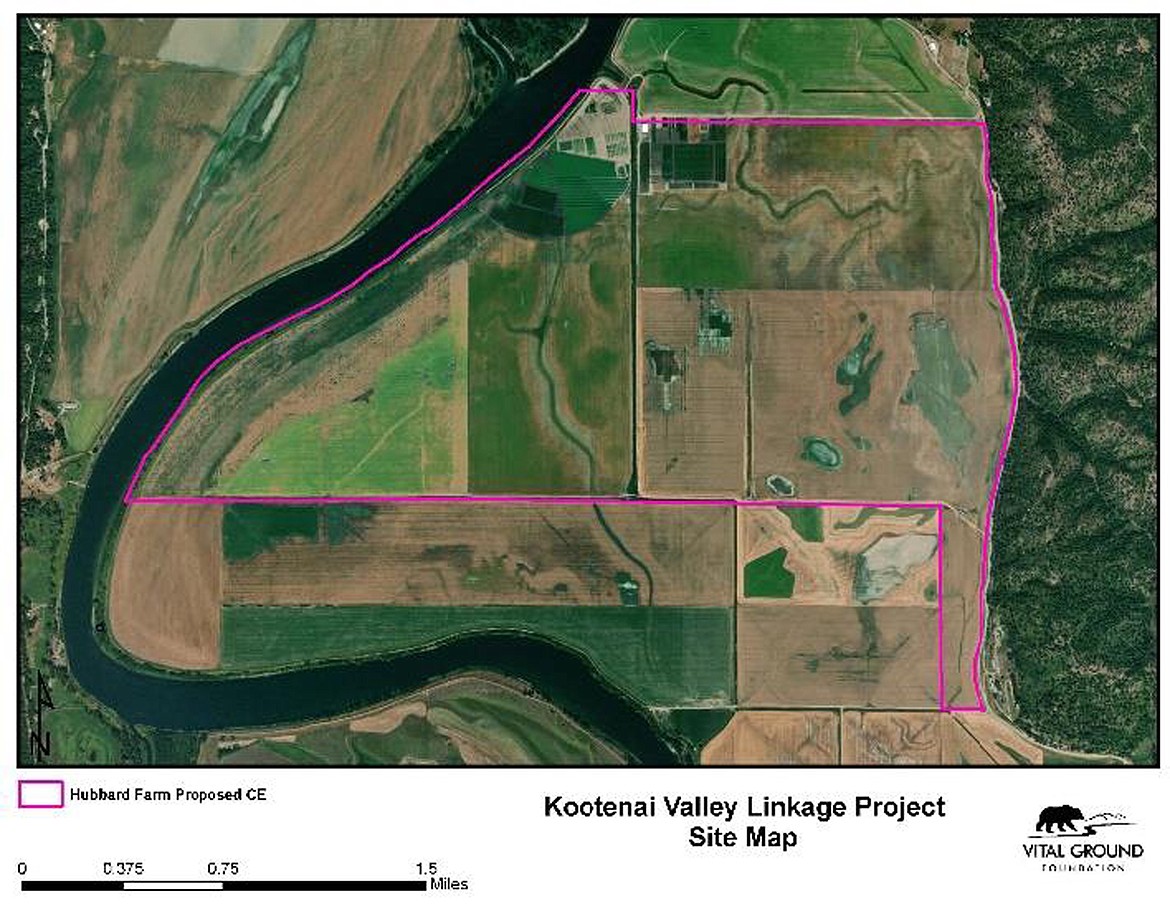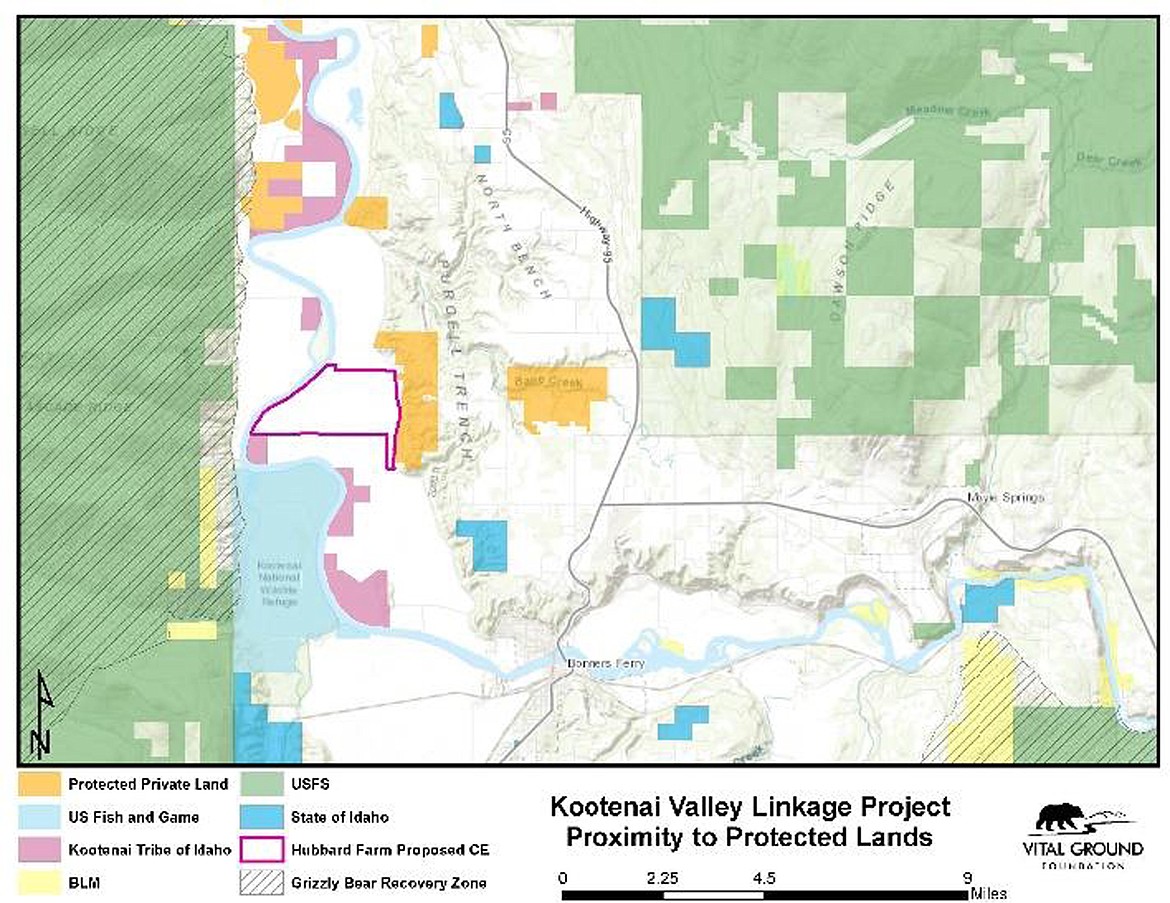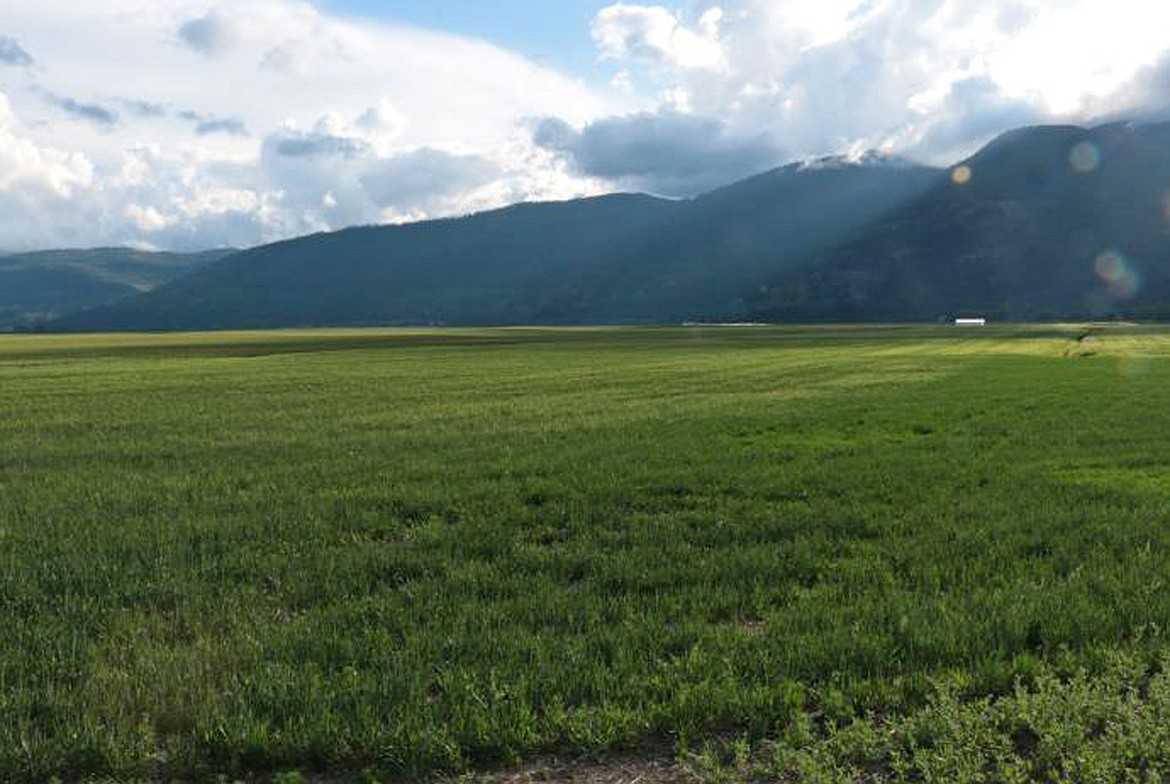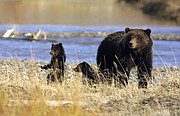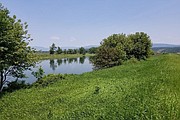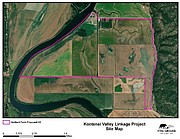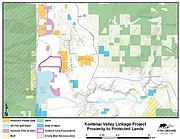Landscapes Initiative announces first projects to conserve essential lands
BONNERS FERRY — Critical wildlife habitat in the Kootenai Valley is being conserved as part of the Pacific Northwest Resilient Landscapes Initiative.
The initiative, which is a partnership of the Land Trust Alliance, Oregon Community Foundation, Seattle Foundation and Idaho Community Foundation, announced its first projects to conserve essential lands. The Initiative launched last year with lead support by the Doris Duke Charitable Foundation. Among the projects chosen in Idaho is one through the Vital Ground Foundation to protect 1,040 acres of critical wildlife habitat to provide connectivity between the Selkirk and Cabinet-Yaak grizzly bear recovery areas in the Kootenai Valley.
“Our family has been farming this ground for generations and this conservation easement ensures that this land will continue to be farmed and available for wildlife for many more generations to come,” landowner Wesley Hubbard said of the family’s decision to take part in the initiative.
Through the initiative, Vital Ground seeks to protect the critical wildlife linkage habitat and promote connectivity between the Selkirk and Cabinet-Yaak grizzly bear recovery areas. North Idaho is one of the fastest growing regions in the country and traffic and housing development is hindering wildlife movement between the mountain ranges, Vital Ground officials said in a description on the project.
“Connectivity between bear populations is not only important for genetic interchange but also a critical response to habitat shifts in a changing climate,” they said. “A conservation easement on the Hubbard farm will build on existing conservation in the valley and maintain a critical wildlife corridor between two threatened populations of bears.”
The Kootenai Valley Linkage Project contributes to large landscape conservation in the U.S. Northern Rockies and north into Canada. The project, which lies between the Selkirk and Purcell mountains, helps connect these two ecosystems and biologists have identified the landscape as a top priority for grizzly bear habitat protection.
As food sources and other habitat features shift due to climate change, the ability of wildlife to move and adapt is vital to biodiversity, Vital Groun officials said. Securing this property will help ensure that wildlife can move between ecosystems as the climate changes. The Hubbard farm contains rich riparian areas and productive soils that will support wildlife and local communities well into the future as climate changes.
As part of the project, the foundation plans to restore wildlife cover and riparian vegetation to improve habitat security and wildlife connectivity as well as improve aquatic habitat for endangered and native fish.
Vital Ground and others would work in partnership with the Hubbard family, U.S. Fish and Wildlife Service and Kootenai Tribe of Idaho.
Also selected chosen as part of the initiative:
• The Nature Conservancy in Idaho to purchase a 5,000-acre conservation easement vital to sustaining wildlife and working ranches between Craters of the Moon National Monument and the Pioneer Mountains.
• Wood River Land Trust to significantly expand the Hailey Greenway by adding 118 acres in Croy Canyon, adjacent to the City of Hailey’s Lions Park, while preserving sensitive wildlife habitat.
Projects were selected based in part on work of scientists at The Nature Conservancy, which developed a framework to identify lands that could best adapt to climate change and offer a diverse array of benefits to people, plants and animals, including clean and abundant drinking water. More information about each of the projects is available at oregoncf.org/community-impact/impact-areas/land-and-nature.
“Conserving the incredible landscapes of the Pacific Northwest has never been more clearly important than it is today, for the long-term resilience of the region’s biodiversity and its people,” said Sacha Spector, Program Director for the Environment at the Doris Duke Charitable Foundation.
Karen Bilowith, President and CEO of the Idaho Community Foundation, said the coronavirus pandemic showed the importance of preserving Idaho’s natural places.
“The role of Idaho’s natural places and the importance of preserving them has never been as important as during the pandemic, which has amplified the importance of being able to rejuvenate by enjoying the beauty and the solace they provide,” Bilowith said. “As the Idaho Community Foundation provides leadership to help communities respond to COVID-19 and its impact, it is also crucial to support long-term community resiliency.”
More than half of the $4.8 million needed to fund all 15 projects is already committed. The three foundations and the Land Trust Alliance are engaging supporters to secure additional project funds and invest in land trusts’ capacity to protect resilient landscapes. These funds will complement more than $150,000 the partners committed in 2019 to help land trusts use the latest science and tools to identify climate-resilient lands to protect.
Andrew Bowman, Land Trust Alliance’s president and chief executive officer, noted that these projects reflect the diversity of the region’s landscapes and land trusts. Representing years of effort on the part of land trusts, the projects will provide lasting benefits for the plants, animals and human communities that use them.
“Land can play a critical role in addressing our climate change challenges,” Bowman said. “Investing in the permanent protection of natural lands and in land trusts not only improves our quality of life and the health of our communities, but also helps us in the global effort to protect us from and adapt to a changing climate.”


